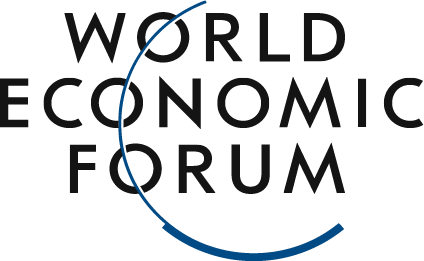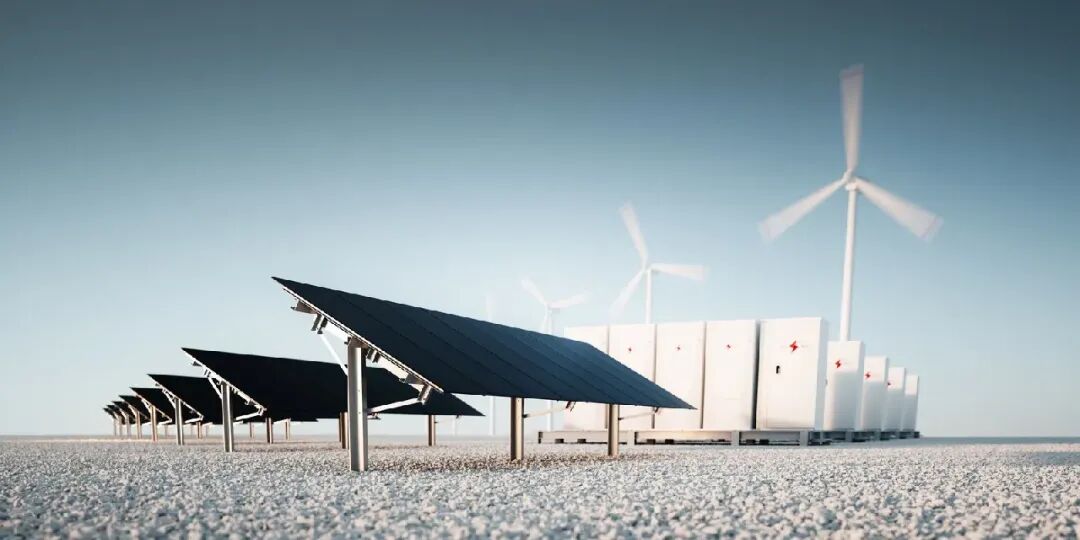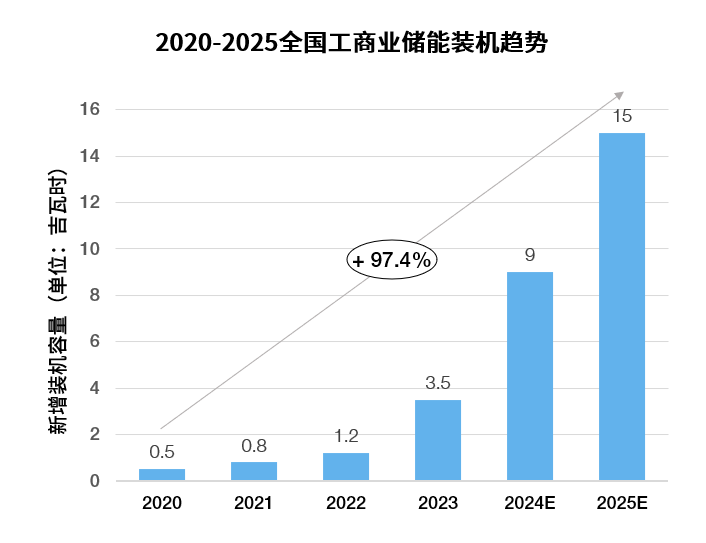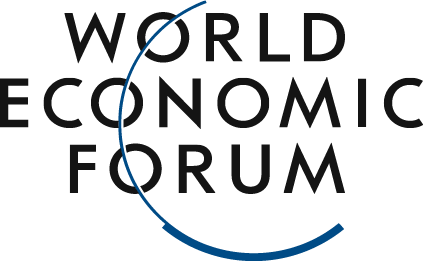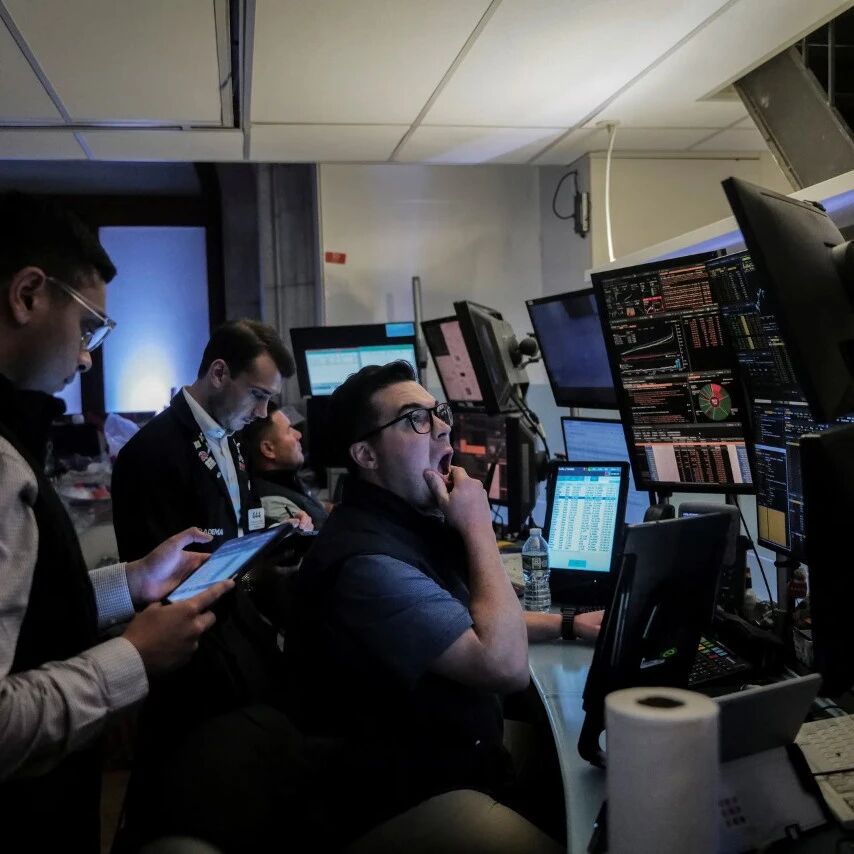Combining distributed renewable energy with energy storage has emerged as a viable solution for the green transition.
Image source:Getty Images/iStockphoto
Kristen Panerali
Global Head of Clean Power, Grids, and Electrification at the World Economic Forum
Zhang Xun
Managing Director, Strategy Consulting at Accenture
In 2023, China accounted for 97% of newly commissioned advanced energy storage systems, continuing to dominate the market.
2023 was dubbed the "Year One" for industrial and commercial energy storage in China, and research indicates that significant growth potential still remains.
The World Economic Forum's "Clean Power in Industry" initiative has invited three executives and experts from businesses and industry associations to share insights—drawn from diverse perspectives—on how Chinese industrial companies are advancing the deployment and adoption of energy storage solutions.
Against the backdrop of the global climate goals set forth in the Paris Agreement and China’s commitment to its “3060” strategy, the industrial sector bears a critical responsibility in advancing green, high-quality development. However, as companies within the industry transition toward clean energy, challenges such as curtailed wind and solar power—and the inherent volatility of renewable energy output—pose significant hurdles during the deployment of distributed on-site renewable energy systems. To further accelerate the shift to clean electricity in the industrial sector, integrating distributed renewable energy with energy storage solutions could emerge as a viable pathway. This approach not only helps balance energy supply and demand but also enhances overall energy efficiency.Image source:Sunway Power, Accenture Insights
Currently, the industrial energy storage sector is facing a landscape where opportunities and challenges coexist. On one hand, the industrial energy storage market holds immense potential, as more and more companies recognize the critical role of energy storage, leading to a growing willingness to install such systems. On the other hand, industrial enterprises still encounter significant cost barriers during the procurement and deployment of energy storage solutions—costs that include land acquisition, grid connection, and financing—which severely limit their ability to enhance overall economic efficiency.
The World Economic Forum's "Clean Power for Industry" initiative invited three experts to share insights on advancing the deployment of industrial energy storage.1. Gao Jifan, Chairman of LONGi Green Energy"In the context of the evolving development landscape, the energy storage industry now more than ever requires a high-quality, high-level upgrade. Tianhe Solar Energy is committed to fostering a five-dimensional driving force in the energy storage sector—encompassing brand building, financial viability, cutting-edge products, system integration, and exceptional delivery and service—thereby paving the way for a premium, sustainable path in solar-plus-storage development."Industrial energy storage features "self-consumption, peak-valley arbitrage, capacity-based electricity charges, and reliable power supply," making it a critical solution for addressing the temporal and spatial mismatches between solar PV generation and grid demand. Among these, an efficient and secure integrated solution is of paramount importance.At completed projects such as the DeLong project in Yancheng, Jiangsu, Trina Solar provided a comprehensive energy storage solution that, thanks to its modular design, enables highly efficient integration of multiple systems. Additionally, an Energy Management System (EMS) is used to communicate with and monitor the Power Conversion Systems (PCS) and battery containers, significantly enhancing system efficiency and improving power quality.The LONGi project leverages energy storage by charging during off-peak hours—when electricity prices are lower—and discharging during peak demand periods, thereby capitalizing on the price difference between peak and valley rates to reduce operational energy costs for businesses. At the same time, the system provides backup power during grid failures or maintenance, enhancing overall power supply reliability and minimizing the risk of production disruptions.
Moreover, the energy storage solution enables owners to actively participate in grid frequency and load balancing, boosting the grid’s ability to regulate and operate more efficiently. By delivering ancillary services such as frequency regulation and reserve capacity, the system generates additional revenue streams, further strengthening the company’s market competitiveness.
Additionally, this innovative setup empowers owners to seamlessly integrate renewable energy sources like wind and solar power, accelerating the transition toward a cleaner, more sustainable energy landscape.In terms of its financing model, LONGi Green Energy Technology secures both ample funding for energy storage projects and ensures their stable operation by jointly investing with partners and signing energy management contracts.2. Yu Yong, Chairman and Party Secretary of Hebei Steel Group"The energy structure lies at the root of the steel industry's high carbon emissions. Hebei Iron and Steel Group is leveraging hydrogen energy, green electricity, and energy storage as breakthroughs to accelerate the transition toward clean energy, boost renewable energy utilization, and gradually establish a diversified, complementary clean energy system. This initiative aims to drive sustainable development in the steel sector while making a positive contribution to global efforts against climate change and environmental protection."Hebei Iron and Steel Group is proactively addressing the challenges of green transformation and growing demand for green electricity by pioneering green power trading within the steel industry, with its annual green electricity volume ranking among the top ten nationwide. The company is also aggressively expanding renewable energy generation, aiming to reach a total installed capacity of 350 MW by 2025. To further enhance the utilization of renewable energy, Hebei Iron and Steel Group is accelerating the research, development, and industrial-scale deployment of energy storage technologies, continuously improving overall power efficiency.We are strategically positioning ourselves in the emerging energy storage industry, embracing the untapped blue ocean of the energy storage market. To capitalize on this opportunity, we have established Hebei Dahe Energy Storage Technology Co., Ltd., which will fully leverage our abundant vanadium-titanium to build a state-of-the-art production line capable of manufacturing 300 MW/year of vanadium-based battery energy storage systems. This initiative will drive the continuous advancement of the vanadium-titanium industry chain, innovation ecosystem, and value chain toward higher-end applications, ultimately helping us cultivate new comparative advantages and distinctive competitive strengths in the market.Leveraging the advantages of energy-use scenarios to drive demonstration projects for energy storage technologies. By capitalizing on the abundant photovoltaic resources surrounding Chengde Vanadium & Titanium, we are advancing the construction of a 150MW integrated source-grid-load-storage project within the Vanadium-Titanium New Materials Industrial Park—setting a benchmark model for promoting a green energy strategy that seamlessly integrates wind, solar, electricity, and industry. Additionally, at Hebei Steel Wugang, a 157MW/314MWh electrochemical energy storage system has been implemented, significantly enhancing the energy efficiency of the electric furnace short-process production line while helping to reduce carbon emissions, lower costs, and boost overall productivity. Meanwhile, Zhangxuan Technology is planning to deploy compressed air energy storage systems, exploring innovative applications of this technology in the steel industry and fostering a diversified portfolio of energy storage solutions.Following the "6+2" low-carbon development technology roadmap, Hebei Iron and Steel Group will continue to drive optimization of its energy structure, step up research and development as well as application of energy-storage technologies, and promote new energy-plus-energy-storage projects—paving the way for a green transformation in the steel industry.3. Chen Haisheng, Chairman of the Zhongguancun Energy Storage Industry Technology Alliance"Early policy guidance is the key to unlocking rapid, high-quality growth in regional industrial energy storage. This mechanism not only creates a win-win situation for both businesses and local governments but also fosters a virtuous cycle of sustainable industry ecosystem development."The Zhongguancun Energy Storage Industry Technology Alliance found in its research that certain regions have achieved remarkable success in deploying energy storage systems, and the policy mechanisms driving these advancements are worth exploring and learning from in greater depth. For instance, Zhejiang boasts a wide range of energy consumption scenarios but struggles with high costs associated with energy storage infrastructure and lengthy payback periods. By implementing diversified user-side incentives for energy storage, Zhejiang has enhanced the economic viability of storage projects, thereby supporting the growth of the photovoltaic-plus-storage industry.Zhejiang Province's electricity supply and demand situation has prompted a shift in time-of-use pricing to a "two-peak, two-valley" model, allowing new energy storage power stations to perform peak-to-valley charging and discharging twice daily. Additionally, several cities and districts have introduced supplementary subsidies for energy storage projects, primarily in the form of payouts based on discharge volume or directly tied to installed capacity. These policies have effectively shortened the cost-recovery period for storage projects, easing the financial burden on businesses and making such investments more attractive. As a result, market participants are now more eager to get involved. Amidst the ongoing trend of subsidy reductions, the market can now rely on a self-sustaining, positive feedback loop to drive the healthy growth of the energy storage industry.During the implementation of these policies, the initial subsidy investments not only guided industry development but also generated tangible returns on investment, expanded the tax base, and strengthened the positive financial outcomes for local governments.These success stories demonstrate that with well-designed policy incentives and effective macroeconomic regulation, it’s possible to achieve dual growth—both for energy-consuming enterprises and local governments. Zhejiang’s case illustrates how policy guidance can "revitalize" regional industrial energy storage systems, enabling large-scale deployment and fostering long-term sustainable development, thus providing valuable insights for other regions.The future is here—let’s jointly write a new chapter in industrial energy storage.Recent research reveals that by 2030, it will become easier for commercial and industrial energy storage systems to participate in spot markets and provide ancillary services, leading to significantly higher revenue levels. In particular, benefits from aggregating through virtual power plants to trade in the spot market are expected to increase tenfold, with these projects eventually generating nearly 80% of their total revenue after reaching financial viability.The future of industrial energy storage holds vast potential—and the curtain has already been raised. However, to make this vision a reality, all stakeholders must work together effectively.Stakeholders still need to work together synergistically to jointly drive the company’s own clean energy transition and the orderly development of the industrial energy storage sector. Only then can we fully leverage the critical role of industrial energy storage in achieving the "dual carbon" goals, while also encouraging enterprises and industrial parks to build their own sustainable, green ecosystems on-site.
Feel free to share this on WeChat Moments; please leave a comment below the post if you’d like to republish.
The World Economic Forum is an independent and neutral platform dedicated to bringing together diverse perspectives to discuss critical global, regional, and industry-specific issues.
Follow us on Weibo, WeChat Video Channels, Douyin, and Xiaohongshu!
"World Economic Forum"
